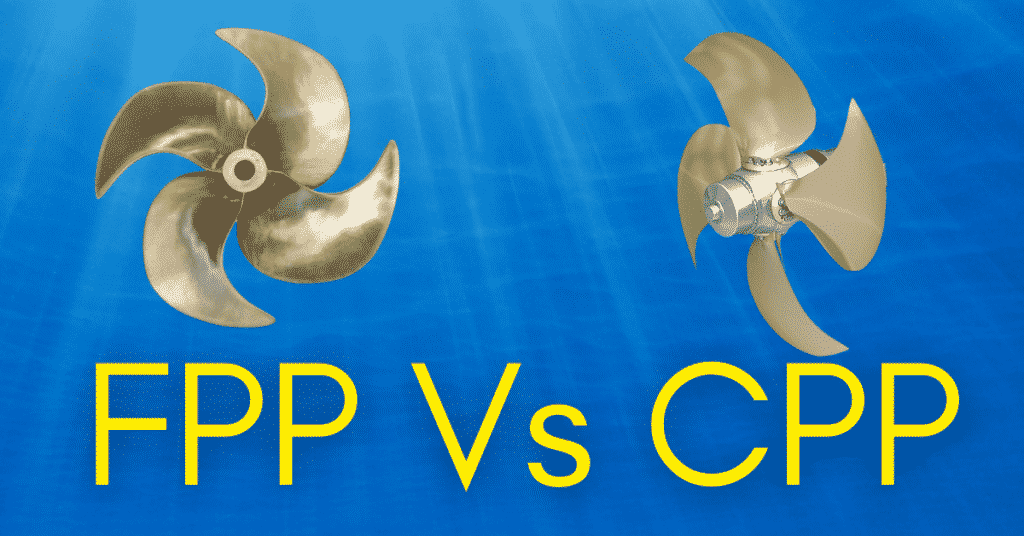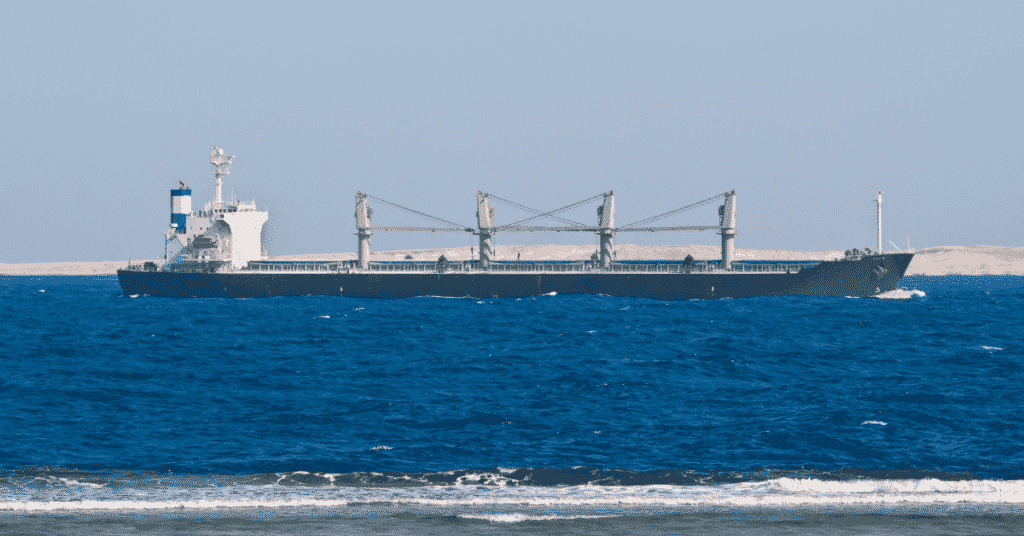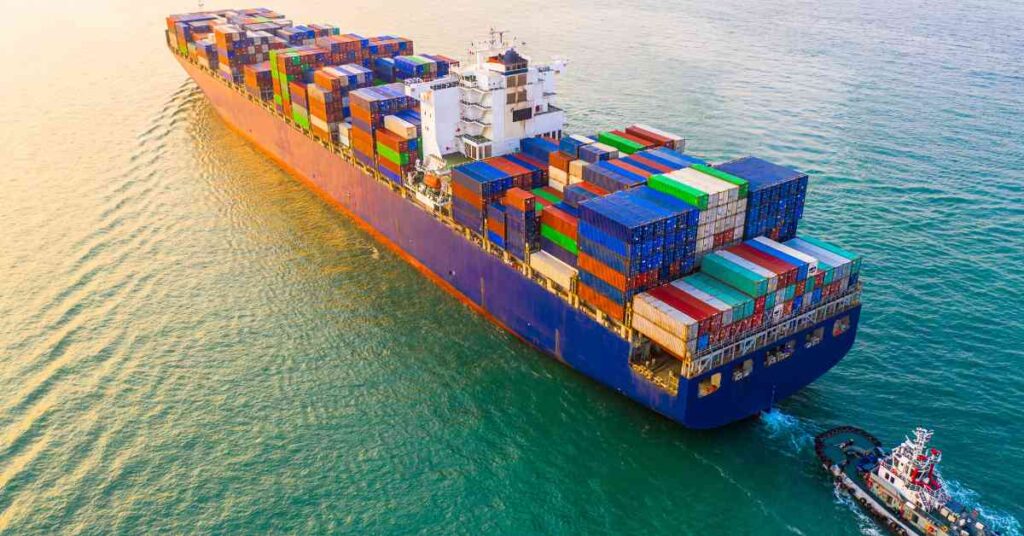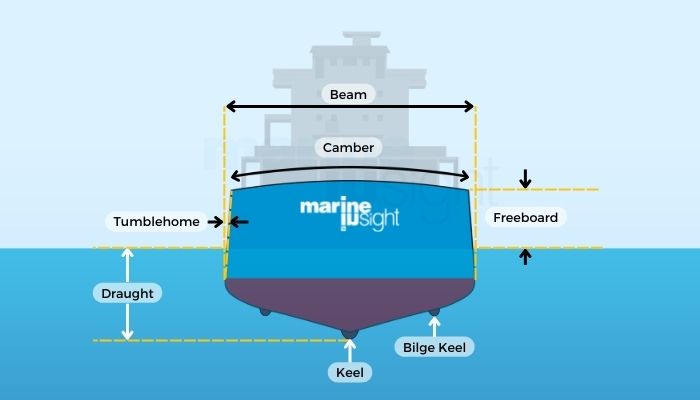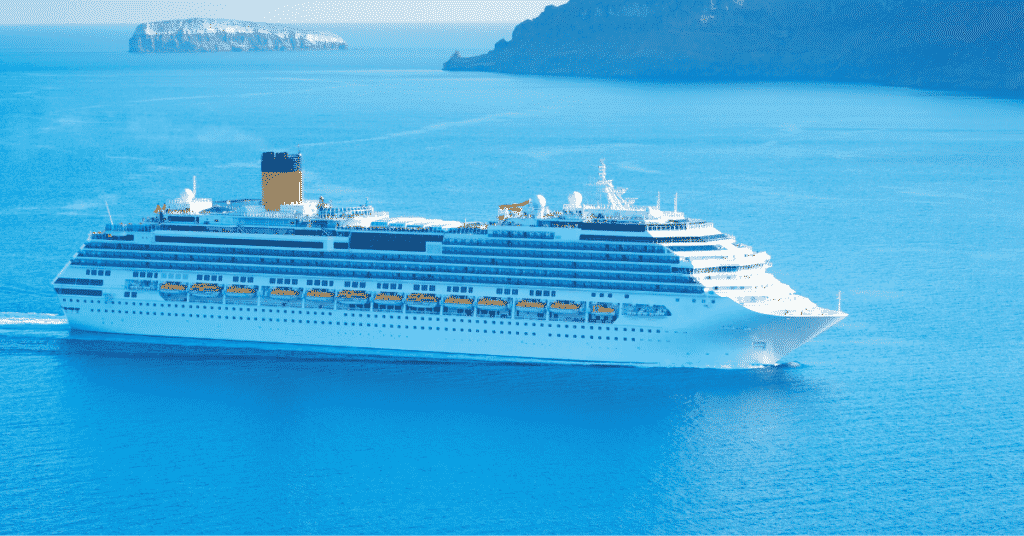A Guide To Types Of Anchors
What is an Anchor?
An anchor refers to a nautical or marine equipment intended to restrict vehicle or structural movement in the water. Anchors achieve their purpose by either using their weight to hold structures in place, clamping on to the bed of the waterbody, or using a combination of both these techniques.
In addition, anchors can also act as drogues (positive drag mechanism) for ships and other such vessels during storms. They provide a restoring drag that keeps the vessel stable and steady and prevents slamming of the bow or flooding through green water loading during unsteady conditions.
Bow slamming refers to the fore of the ship violently striking the water surface due to large waves that can cause structural deformations and failure.
Green water is a technical term for any water than is present on the upper decks of a vessel due to the partial flooding as a result of the natural motions of waterbodies.

Although naval architects generally try to reduce drag as much as possible while designing moving structures to increase their straight-line speeds, drag can slow vessels down during storms so that they remain under the control of their propulsion system. This prevents the rolling motion of waves from damaging vessels or other structures floating on water.
Conventionally, anchors were found onboard large vessels such as general cargo ships and tankers, to hold them in place either while being moored to the dock at the port, or if they required to be at a complete standstill in the middle of a sea or ocean.
With the advent of oil rigs and other sub-sea structures deployed in the middle of large water bodies, anchors are used to connect these large semi-submersible structures to the seafloor.
Generally, anchors are meant to be temporary so that they can be reeled back on to the structure when the need arises. However, certain offshore structures require permanent anchors to keep them connected to the bed of the waterbody since they remain at a single location for extended periods.
What Are Anchors Made Of?
Anchors are generally made of metals resistant to long-term corrosion that use suitable methods of protection such as electroplating and galvanization.
However, they can also be made from fibre-reinforced composites or polymers such as carbon-fibre. The advantage of using such materials is that they have a high strength to weight ratio. This means that compared to generic metals, even light reinforced composites structures can handle enormous amounts of load or strain.
However, the disadvantages of using such anchors are that the cost of development and large-scale manufacture is considerably more expensive. Besides, some mooring methods utilize the weight of the anchor to aid in holding down the structure still.
Since composites are extremely light, these types of anchors provide a negligible effect in such situations. An upcoming field of research is the use of multi-layer crossed fibres in composites to provide slightly better weight properties, without adversely affecting the strength of the anchor.
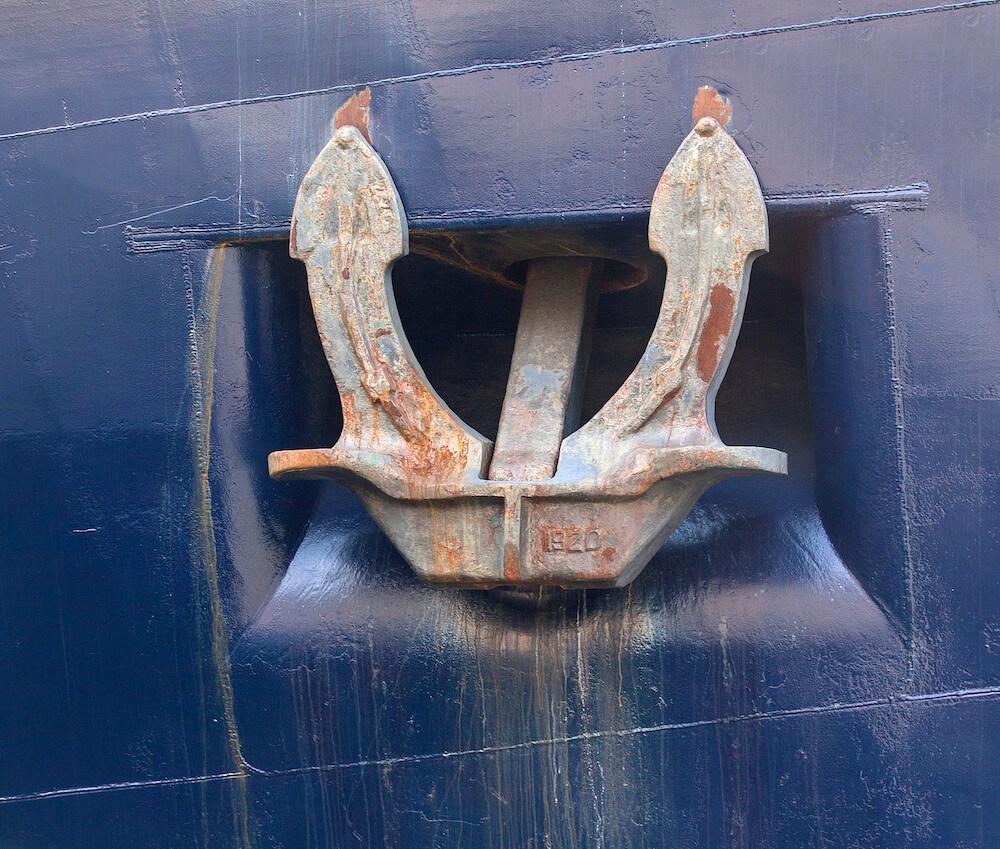
Basic Anchor Design
Modern anchor designs that are extremely stable and able to easily grip on to surfaces are generally derived from three standard designs that have been used from the 10th century onwards.
These are the – Fluked, Admiralty and Stockless anchor designs that are often still in use for small crafts and lightweight boats.
The fluked design uses flukes attached to the central arm of the anchor, commonly referred to as the shank. Flukes are structures similar to the tines of a fork, that are used to provide grip and weight to the anchor.
This design was most commonly used in ships belonging to the early British and Viking sailors. Books and casual diagrams depicting anchors in drawings often use the fluked design for inspiration, as it is mistaken for the structure of modern anchors. This is one of the most basic designs that use the weight of the anchor to drive the flukes into the bottom of the ocean.
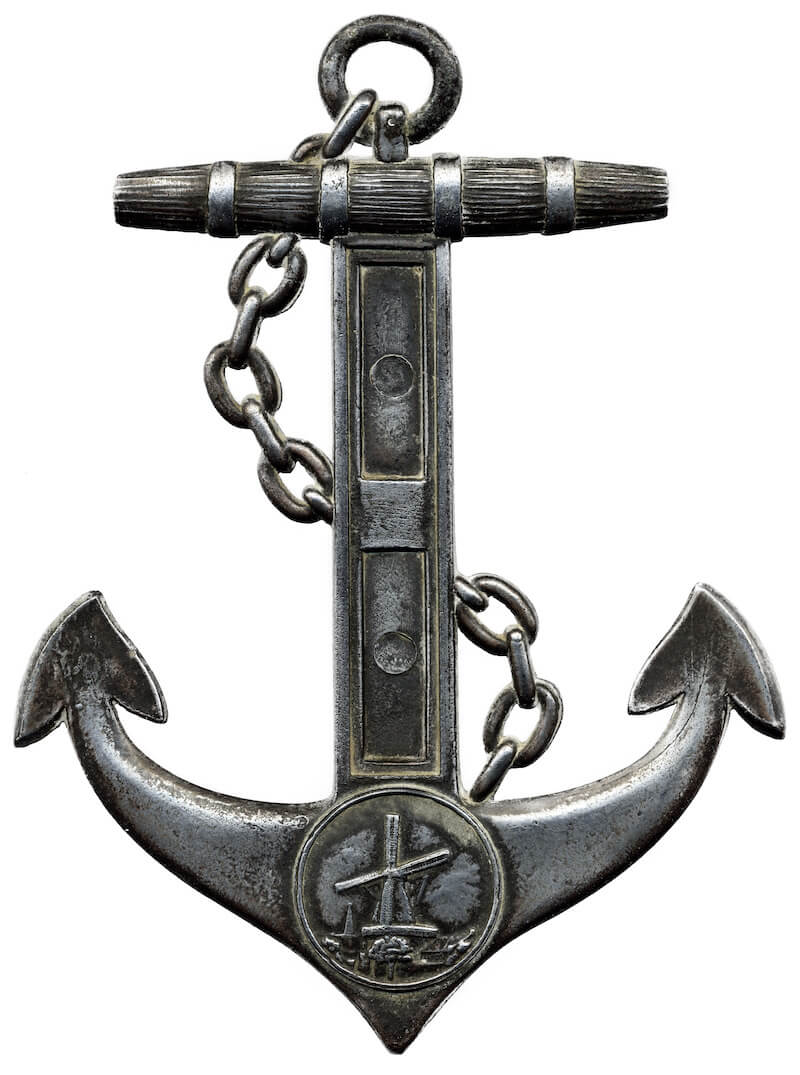
The admiralty design uses two flukes attached to the central shank by arms perpendicular to the main axis. A long bar attached to the intersection between the shank and chain links is known as the stock. It is used to pull the anchor towards the ocean bed or floor until one of the flukes finally digs into the bottom and settles in.
Due to the descent, the fluke is forced into the bed under its weight and the additional force from the stock. However, the issue with the admiralty design is that it can foul up the anchor owing to the arm that is not embedded in the ocean bed.
To overcome this, modern designs incorporate arms that can collapse onto the central shank. By doing so, the anchor changes into a single shank and fluke design that can be stowed easily and will not foul up the anchor when deployed.
The main change from the standard pattern of admiralty anchors was the stockless style of an anchor. It involved a basic admiralty anchor design that had projections along the bottom which forced the flukes to sink into the ocean bed or floor.
However, despite these additions, the holding power of the stockless anchors is less than their admiralty counterparts. What makes them widely used these days is their ease of storage. They can be quickly hauled up and made to rest against the hull.
The chain or rope forming the links connecting the anchor motors to the shank is reeled in through a hole in the side of the hull known as a cat’s hole or hawsepipe. The convenient design of the stockless is what makes it common on modern ships despite being a relatively old design.
Permanent Anchors
Offshore structures are often deployed for long periods, where they remain in a single location with minimum movement. Due to the expensive and extremely sensitive nature of the equipment used by oil rigs and energy harvesters, they cannot afford to move by more than a few millimetres.

Also, the risk of damaging important components or causing oil leaks require these structures to be anchored in such a manner that underwater currents and small waves are not able to easily dislodge and move the entire setup. Permanent anchors are used in this regard to restricting the movement of such structures. Also, a specialized class of tug boats known as Anchor Handling Tugs (AHTS) often use this anchor line to tow these semi-submersible structures from one location to another for deployment.
In general, such anchors are not meant to be frequently moved and spend extended periods at the same spot. However, when the time comes to move the floating structure, the anchors often need to be reeled back on the surface or towed using an AHTS.
In such cases, to dislodge the anchor, a trip line is attached to the head and is connected to the structure. In the event of the anchor head being stuck to the seafloor, the trip line can be used to provide an additional force to move the anchor. Sometimes, explosives or small, controlled charges are used to disturb the bed of the ocean.
The anchor is then hauled back up to the surface. In addition to these two methods, some types of anchors use detachable heads that can be left on the seafloor after the operations are completed, and when it is time to move the structure. The anchor chain and stock are reeled on to the structure leaving the head behind.
The problem with such a type of anchor is that it leads to pollution of the ocean floor, especially if the metals are toxic to marine flora and fauna. Besides, there is a risk of accidentally disengaging the head from the rest of the anchor while the structure is still in operation. The most common method of dislodging the anchor is by using a trip line aided with contained charges deployed close to the ocean bed.
It is important to finalize the number of anchors to be used to tether any structure. From the study of mechanics of a body, it is known that using a three-point anchoring mechanism, any structure can be completely held stationary. This is because forces from any direction can always be countered by the alignment of the anchors in such a system.
The common type of anchors used in such permanent deployment situations is the mushroom, auger, high-holding, and deadweight methods.
Mushroom Permanent Anchors
Mushroom anchors, as the name suggests, are shaped like inverted mushrooms, with the head being laid in the sea or ocean bed. This style of anchor utilizes its weight, suction power and relative friction between the bed and anchor head to keep itself firmly attached to the strata of the ocean floor. However, it only works in conditions when mud, silt or sand are prevalent on the floor of the ocean.
Other materials such as rock and sand are not able to provide the adhesion required to keep the anchor firmly attached to the ocean floor. The science behind how this system works is that the anchor uses a derived version of the Archimedes Principle on soft, granular or viscous media such as mud and sand.
Since these materials cannot generally hold up the weight of an anchor (these weights can reach up to several tonnes for ships with abnormally high displacements), they allow the head to sink in until it has displaced enough strata material to equal its weight.
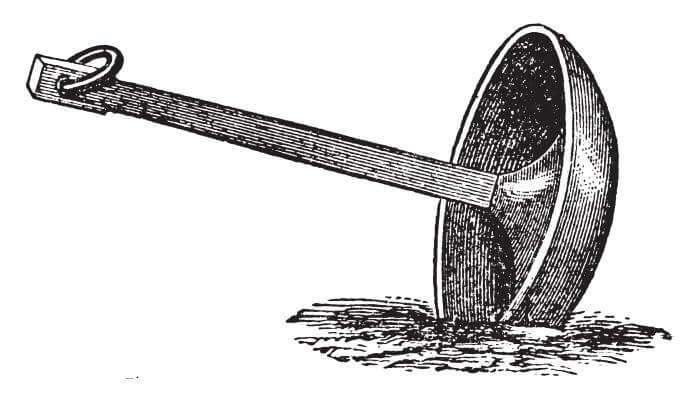
Due to the sheer size of such anchors, these could easily account for several meters of depth in the ocean or seafloor. They can resist almost all types of wave motions and even the most severe of storms.
To remove them, the sand or mud surrounding the anchor is dislodged, until the adhesive attraction between the head and the strata material is weak enough to be broken by the anchor hauling force provided by the motors on the structure.
While the strength provided by these anchors makes them very useful in restricting motion, they can only work in regions where the floor of the ocean or sea provides sufficient suction to drag down the anchor. This makes them ideal in regions close to beaches or lagoons.
Auger Permanent Anchors
The auger type of anchors makes use of the physics behind the high retention power of screw design, and their ability to remain locked in a position for extended periods. These anchors consist of large threaded heads that are drilled into the bed of the sea or ocean where the structure is to be installed.
Often instead of directly being driven into the ocean floor, a casing is first attached to the bottom of the ocean, with grooves cut into it. The casing and screw heads are often made from titanium or similar alloys and materials resistant to rusting and corrosion from exposure to water and underwater organisms.
The reason for using titanium is that it is ideal for creating strong and unreactive components such as riser joints in oil rigs. However, the relative abundance of titanium and the extensive treatment of the materials used in the production of this type of anchor tends to make the process of manufacture and set up expensive.
Another problem that arises while setting up the anchor is that ready access to the case and screw head must be provided, since perfect alignment is required, and any errors in drilling the ocean or sea bed can lead to damage to the equipment. Thus, this type of permanent anchor is mainly used in regions that are shallow and located close to the shore or have low-tides that make it possible to access the casing and head.
Issues can also arise when the bottom stratum is made of soft pliable materials such as mud, silt or sand. Since the screw works on the principle of friction between the casing and head, such materials do not generate sufficient traction for the screw to properly grip the ocean or sea bed.
The screw and its casing will continuously swivel without actually being able to anchor the structure. However, despite so many restrictions on the location and deployment of this type of anchor, it is considered to be one of the strongest methods of permanently anchoring any structure. In operating environments where all the basic requirements are met, these anchors are commonly found.
High Holding Permanent Anchors
High holding types are a class of anchors that are characterized by their High Holding Power (HHP) or Super High Holding Power (SHHP). These anchors are used in the oil and gas industry to tether large semi-submersible structures or to hold down underwater pipelines running across the ocean bed or seafloor. Such anchors are considerably larger and heavier than their counterparts.
To be declared as a high holding anchor, they must exhibit strength and retention capabilities equal to twice the normal values of conventional anchors. The conventional anchor considered for reference purposes must be the same weight as the HHP anchor being tested. To achieve this tag, three tests must be conducted successfully, and the anchor must be tried in a minimum of three different types of soil. Compared to the previous two types of permanent anchors, this classification ensures that the anchor functions in any type of condition.
Similar to HHP anchors, Super High Holding Power is a classification that guarantees that the tested anchor can withstand a minimum force equivalent to four times that of a normal anchor weighing the same. Test conditions from the HHP testing are applicable in this case as well.
Once the tag of HHP or SHHP is provided to the anchor being tested, a 25% reduction in weight is allowed under maritime rules. Due to the holding power of these types of anchors, this reduction is often not drastic. To lay down this type of anchor, pennant wires and tugs are often required, owing to the sheer size and weight.
An interesting point about these styles of anchors is that HHP and SHHP only classify the holding power and can be applied to both permanent and temporary anchors. In that case, the conventional anchor used as a reference must also be considered to be either temporary or permanent so that the tested values translate accurately into the real world.
Deadweight Permanent Anchors
These anchors are the simplest and most cost-effective method of tethering down floating structures to a single place. They employ the weight of dense structures such as solid metal blocks or concrete bricks to provide a downward force.
The only issue with this type of anchor is that it requires to be relatively larger than normal anchors so that it can successfully hold down large semi-submersibles, oil rigs, and other offshore installations. In such a case, it can be difficult to transport and store the large anchor on the structure and to lower it gradually to the ocean bed.
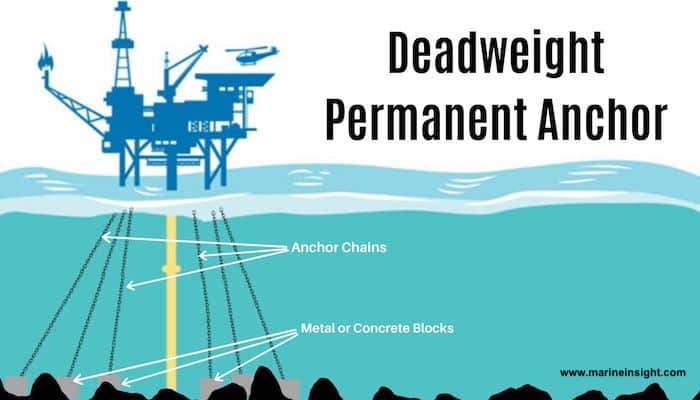
This type of anchor is similar in structure to a mushroom anchor in the fact that they use their weight to hold down the structure on the surface of the water.
Like mushroom anchors, deadweight anchors can function better if there is an inherent suction or downward pull of the weight. That way, the anchor head is buried several meters in the ocean bed and becomes firmly lodged in the strata.
Also, it is better than mushroom anchors in the fact that it can operate in absolutely any sort of environment without the explicit need for any suction or adhesion. This makes them a cheap option to moor or berth large structures at a single place.
If we compare mushroom and deadweight anchors of a similar structure, the mushroom type is always more effective due to its smaller size and the ability to get dragged down into the mud or soil. With the large size of the deadweight anchor, it can be difficult to operate. It makes up for this with is the ability to work in any condition of the ocean bed or seafloor.
Temporary Anchors
As the name suggests, these anchors are intended to be used for short periods. Generally, they are used to berth and moor vessels or to stop them dead in the water for various reasons.
Unlike permanent anchors, simply attaching a heavyweight to the anchor line is not sufficient, since reeling back these anchors then become next to impossible. Hence, temporary anchors rely on the clamping or hooking of the anchor into the seafloor or ocean bed.
To do this, it uses a combination of its weight and gravity to drive a set of flukes or pointed shafts designed to embed themselves in the bottom strata. Most modern temporary anchors derive their basic design from the fluked, admiralty and stockless anchor.
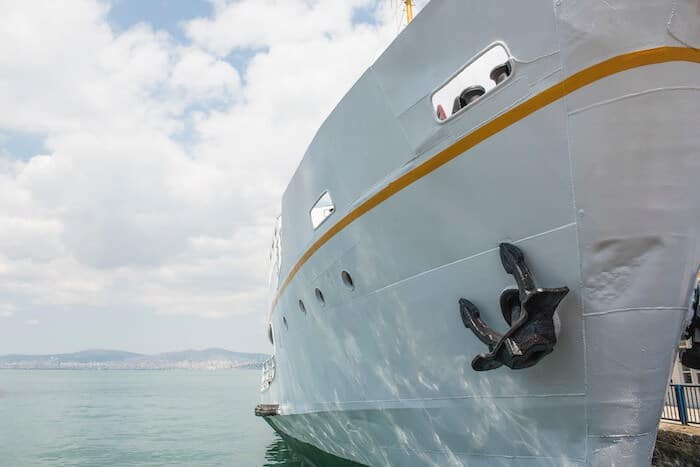
Since temporary anchors are used to tether ships and other crafts, they do not need to be made of expensive materials such as titanium. Since they can always be hauled back on to the vessel in a matter of minutes, they are often made of metals or alloys that do not easily rust and are coated with a basic layer of zinc or some other cheaper non-corrosive metal.
Carbon fibre or other reinforced polymers also serve the purpose of hooking and clamping on to the ocean bed, due to their high strength to weight ratio.
To remove the anchors of ships from the seafloor or to dislodge it from the material at the bottom of the ocean, tripwires are used to provide an additional moment of pull. They also serve as an extra source of the force that can haul the anchor head quickly to the surface if the need arises.
To embed the anchor, they are let down till they touch the ocean bed while the ship is still slowing down. It is essential that they quickly catch on to debris, small rocks or cracks in the ocean bed before the vessel comes to a complete halt. Once this is done, they must be able to settle in and prevent motion due to light waves and currents.
In general, for ships at sea that have set down their anchor for some reason, small movements due to waves are of no importance and do not affect the ship, crew or goods in any way. However, for moored or ships berthed at a quay or port, they must not shift from their position. Any extensive movement can lead to damage to both the hull of the ship and the port itself. To prevent this from happening, tugs and additional mooring lines are employed to support the anchor in holding the vessel steady.
Common types of temporary anchor designs used by boats and ships include Northill, grapnel, Herreshoff, Danforth, Bruce and plough anchors.
Northill Temporary Anchor
The Northill anchor is a lightweight design that is not commonly in use these days owing to superior modern designs. It is a combination of a standard anchor and a dual plough design on either side of the central shank. This plough design serves to catch on to any rough surface at the bottom of the sea or ocean that can be used as a mooring point.
However, owing to its shape and severe limitations, it is not commonly found, except in use by seaplanes and other light crafts. The issue with the Northill design is that it depends on one of the two plough blades catching on to some debris or rock at the bottom.
This can require quite a bit of time since unlike conventional anchors, there are only two blades to work within this design. Moreover, nothing is tethering down the anchor other than its inherent weight. Thus, it works only in regions where the ocean bed has a rugged terrain.
Grapnel Temporary Anchor
This style of an anchor is similar to grapnels used in the military or rock climbing. A central metal arm consists or multiple shorter pointed arms known as tines (generally four in number) that grip on to the surface of the ocean bed. It is ideal for rough bottom structures that have several ridges or cracks providing places for the tines to hold on to.
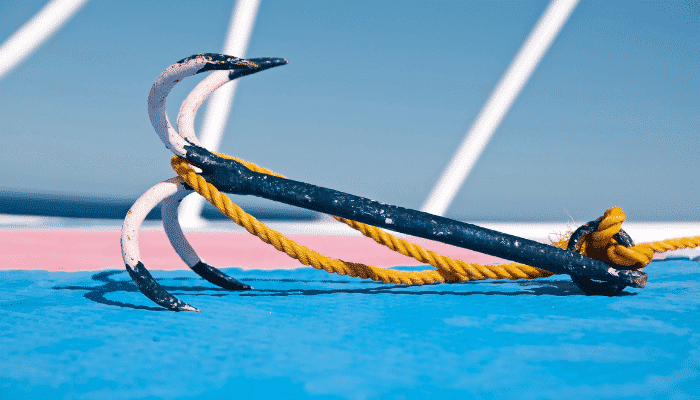
What makes the grapnel style useful is the fact that no matter how the anchor settles down, it will catch on to the ocean bed due to the multiple tines attached to the central arm. However, it does not work in mud, soil or other loose material that makes up the bottom of the ocean. This is because the tines of the anchor are not able to grip and simply lift off the bed when there is a slight movement.
Another problem with this type of anchor is that it can be difficult to retrieve once it is embedded. This commonly occurs when the anchor head or flukes get stuck in rocky or coral conditions. However, with the use of a trip line, it is possible to haul such anchors back to the vessel.
While being stowed back on the vessel, it may damage other components due to its ungainly design. Hence, these anchors are generally hung from the side of the ship itself or are simply stowed onboard small crafts and water boats and then thrown off when the need arises.
Herreshoff Temporary Anchor
Similar to the basic Admiralty anchor used in ships and other vessels, the Herreshoff is a common version of this design. It uses the same principle as the Admiralty but is more manageable. It can be disassembled into three pieces or more for easy storage and can be put back together without any major requirements. This enables the anchor to be quickly and easily deployed.
Like the Admiralty, this faces the same problem of the anchor head being fouled up due to the natural motions of the ship as a result of waves and light currents. Improved designs are implemented in the Herreshoff anchor so that the arm which is not attached to any debris or rocks at the bottom can be collapsed against the shank. This allows the anchor to freely function without the idle arm getting in the way of the anchor cable.
Danforth Temporary Anchor
The Danforth is a lightweight, cheap and easily storable design that uses two triangular blades or flukes attached to the shank to hook or dig into the ocean bed. The gap between the flukes allows for the anchor to grip onto debris and rocks instead of simply acting as a sail against the water currents. Also, the shank and flukes are hinged, so that the orientation of the flukes can be changed depending on the type of material on the seafloor.
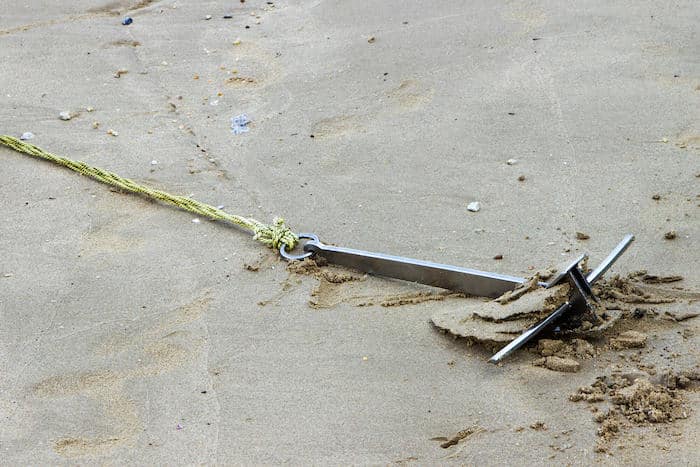
This design uses a tripping line attached to the fluke tips so that the orientation can be varied as the anchor reaches the bottom. Based on research, the ideal angle for embedding the flukes into the bed is 30 degrees. Thus, till the anchor reaches the bottom, the entire anchor is dropped as a single vertical structure to reduce drag and sail effects.
Once the anchor sinks completely, the flukes are oriented correctly and are then allowed to sink into the ocean bed or hook on to the corals or rocks at the bottom.
The design is lightweight and can be folded in on itself for easily being stored away. This makes the Danforth a common design for small crafts operating in regions with shallow to moderate depth so that the trip lines can be employed.
Bruce Temporary Anchor
This type of anchor is commonly referred to as the claw because of its shape and design. It is used to hook into the rocks at the bottom of the ocean and then settle in. However, it does not work when the material at the bottom is loose sand, silt or mud. Also, weeds and other structures can entangle the claw of the anchor without providing any actual anchoring force. Instead, they tend to impede the recovery of the anchor when it is time for the vessel to move on.
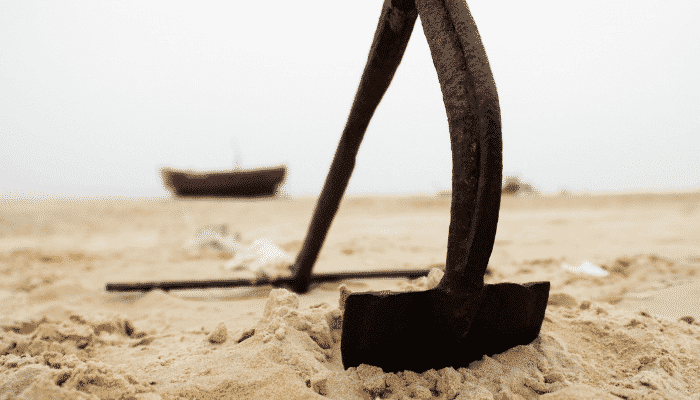
The original Bruce claw design is a relatively redundant design that is now being given up for more practical designs. More modern designs incorporate a claw similar to a spade that can grip most types of materials at the bottom. They incorporate a roll bar to provide additional stability to the anchor head till it can latch on rocks or debris on the ocean bed. Designs such as Rocna, Vulcan and the Ultra utilize this spade design to provide the necessary anchoring force.
Plough Temporary Anchor
Similar to a plough employed in agriculture, this design of anchors uses flat blades or plates attached to the central shank. The aim is for the blades to dig in and grip the ocean bed. Often, in place of a single plate at the end of the shank, three to four blades running perpendicular to the centreline are used. Modern designs utilize an arched shank that can be used to quickly embed the plough in the bottom strata.
The main problem with the plough anchor is that it does not work well in mud, soil or loose materials that comprise the ocean bed. This is because they are simply dragged along the bottom when the ship moves without any resistance whatsoever until they catch on to a rock or similar debris at the bottom. Similarly, with a slight upward force owing to normal wave motions, the plough blades or plates can dislodge itself and pop out of the ocean bed. Hence, ideal conditions are required for this style of anchor to work.
Modern takes on the plough anchor include the Delta design which comprises of an arched shank that is rigid and a combination of either plates or blades that are attached to it. Unlike conventional plough anchors that use a hinged shank, these are single structures that use the weight of the anchor and its inherent design to grip on to the ocean bed.
In Conclusion
Other types of equipment that are used in conjunction with an anchor to hold down a vessel or installation floating on the surface of the water include riggings (such as trip lines), anchor chains and ropes, stowage equipment etc. Anchor chains and ropes are an important factor in determining the reliability of a given anchor since these provide the only connection between the structure and anchor. They must be able to withstand tremendous amounts of force both in tension and contraction. Similarly, trip lines must also be strong enough to apply force on the anchor to orient it in a particular direction.
The bottom line to any anchor design is that the original three standard designs (fluked, admiralty and stockless) have been derived and changed over time with the advent of new technology and requirements. Depending on whether we wish to use permanent or temporary anchors, the basic principle remains the same. All that changes are the design styles depending on factors such as time of being submerged and the material found on the ocean bed or floor.
Do you have info to share with us ? Suggest a correction

About Author
Ajay Menon is a graduate of the Indian Institute of Technology, Kharagpur, with an integrated major in Ocean Engineering and Naval Architecture. Besides writing, he balances chess and works out tunes on his keyboard during his free time.
Latest Naval Arch Articles You Would Like:
Subscribe To Our Newsletters
By subscribing, you agree to our Privacy Policy and may receive occasional deal communications; you can unsubscribe anytime.










